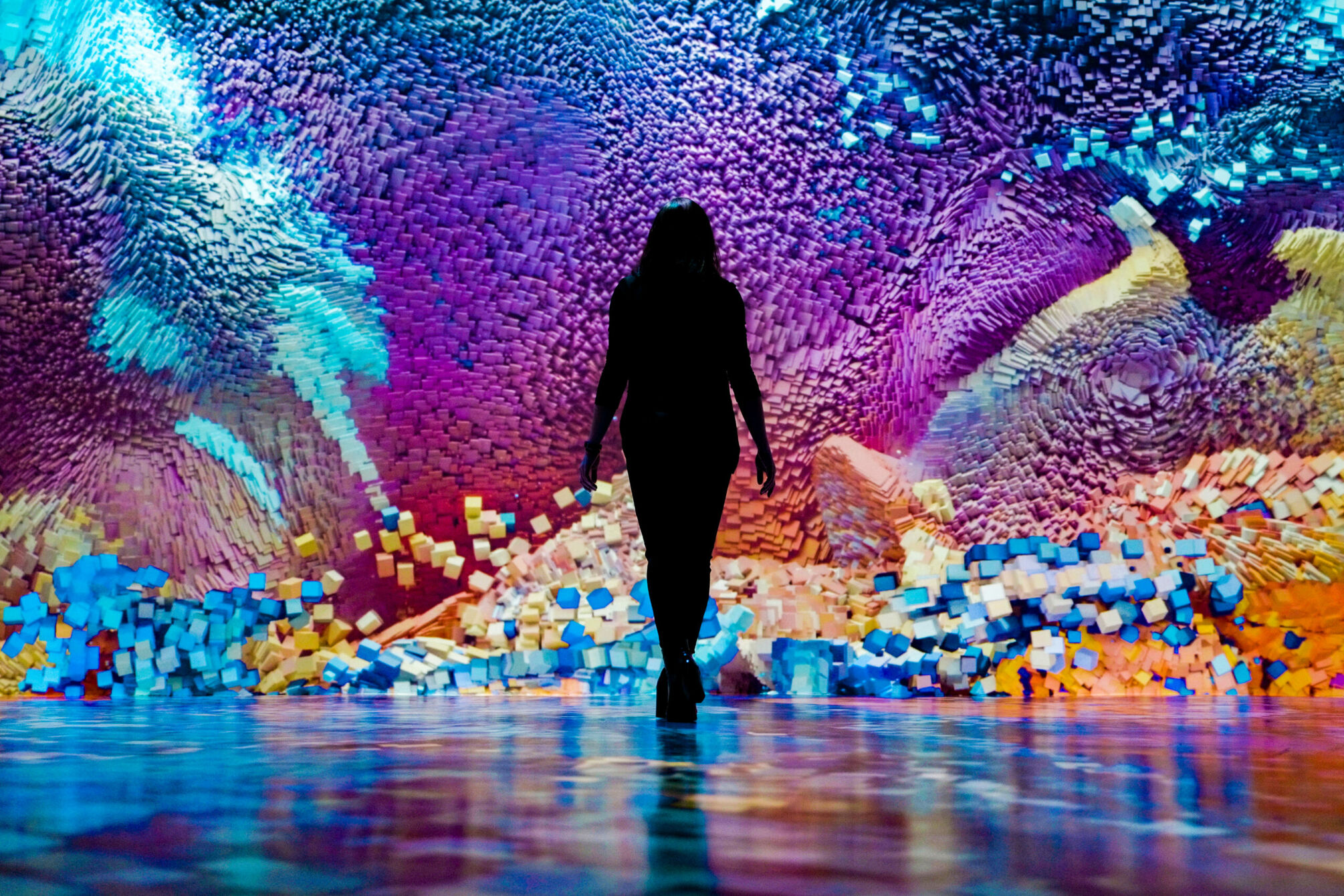The Poetry of Data: Refik Anadol and the Case for AI in Art

If the arrival of the printing press made everyone a critic and social media has transformed everyone into an artist, artificial intelligence, like all burgeoning mediums, has understandably been met with a wave of hysteria and a world of possibility.
Culturally speaking, our fear of AI is irrevocably tied to the ‘robot takeover’ trope, widespread across the history of film — from the haunting depiction of the HAL-9000 computer from 2001: A Space Odyssey to the heartbreaking story of David in Steven Spielberg’s 2001 film, A.I.: Artificial Intelligence — originally conceived by Stanley Kubrick in the ‘70s as a futuristic retelling of the Pinocchio legend.
Fast forward to the 21st century, robots haven’t taken over, and artists have begun utilizing AI (algorithms, machine learning, etc.) both as a tool to help produce art, and as a framework that allows for different experiences interacting or experiencing it. These advancements AI have ushered a new age of creation expression, from Harold Cohen’s AARON computer, which codified the act of drawing, to the eerie portraits of Mario Klingemann and the collaborative AI paintings of Sougwen Chung, to exhibitions that we have produced and presented over the years, including Everything in Existence and TRUST both by fuse* and Transient: Impermanent Paintings by Quayola.

As we look at the intersection of AI in art in the modern day, there is arguably no figure who has garnered more attention as Turkish new media artist Refik Anadol. Born in Istanbul in 1985, Anadol watched Blade Runner when he was eight and recalls the “profound” effect it had on his imagination. In that same year, his family bought a home computer. This early fascination with film and technology would come to anticipate the immersive data sculptures he is globally known for today. Much like Do Androids Dream of Electric Sheep?, the dystopian novel that inspired Blade Runner, Anadol has built his career pondering on the question: If machines can learn, can they dream?
Instead of pigment, Anadol uses data sets and machine learning as his material of choice to paint breathtaking installations that challenge our perception of space, time and narrative. Surely by now, you’ve seen his work. Whether across historical architecture, such as Barcelona’s Casa Battló, Florence’s Palazzo Strozzie and Los Angeles’ Walt Disney Concert Hall, to his latest solo exhibition at Jeffrey Deitch and the monumental installation at the Museum of Modern Art in New York City, ‘Unsupervised”.

But looking back to 2019, we had the opportunity to introduce Anadol to the states — utilizing ARTECHOUSE’s technological infrastructure to collaborate on his first solo exhibition in the US. We have worked side-by-side with the artist on four collaborations, including Infinite Space in DC and Miami, and Machine Hallucination, which launched ARTECHOUSE NYC in 2019, and then was reprised in 2021 due to popular demand along with a monumental NFT release.
“If the doors of perception were cleansed,” wrote the acclaimed English artist William Blake, “everything would appear to man as it is — infinite.” Anadol approached Infinite Spaces with this conceptual framework in mind. Housed at both our DC and Miami locations, the exhibition was defined by a rhythmic and pulsating energy that aimed to explore memories and dreams through the mind of a machine using data sets from human ephemera, intergalactic photographs, along with historical archives and geological activity. These were then translated into hypnotizing sculptures and living paintings in a context that astounded audiences..
Boxes were fabricated that allowed visitors to step inside the idea of infinity, as opposed to observing a concept simply on a flatscreen. “What was really unique about the ARTECHOUSE project, I was able to finally find a place where I can compile all the ideas in one location, one point of view where people can immerse themselves with similarities on the surface, but depth is still available.”
Within each collaboration, Anadol has looked to shape and reshape the way in which we understand the natural and built environment. Machine Hallucination was created by using 100 million architectural images of New York, which were then reimagined across an immersive environment that emitted the city’s collective memories and its potential future. “When I saw the technological infrastructure in New York, that was it,” recalled Anadol, when reflecting on how he first worked with our studio. “It’s the future of cinema. And I think we’ve made it.”
While some fear the capabilities of AI, Anadol reasserts that science, art and technology have always been interlinked throughout the centuries. One only needs to think of the great Leonardo Da Vinci to be reminded of this fact. Like an invisible ray of light, Anadol is “trying to find the poetry inside those datasets to create a new meaning beyond what data means.”
Despite his unflinching optimism, Anadol isn’t naive to the dangers that can be brought on by AI if used in the wrong hands. “Purposeful questions and purposeful reason” will be needed in bringing stability and progress for all sectors of society and not just a select few, he asserts. “Can we use AI to enhance our cognitive capacity? Can we learn better? Can we remember better? What would happen if we had the chance to create a machine that enhanced our capacity of imagination?”
Recent Posts
Walking Through World of AI·magination
Step into a world that could not have been created
ANNOUNCING THE WINTER ARTECH·TALK SERIES WITH NASA: CONVERSATIONS BEYOND THE LIGHT
This winter, join us for a continuation of our sold-out
ANNOUNCING THE FALL ARTECH·TALK SERIES WITH NASA: CONVERSATIONS BEYOND THE LIGHT
This fall, join us for illuminating ARTECH·TALK programming at ARTECHOUSE